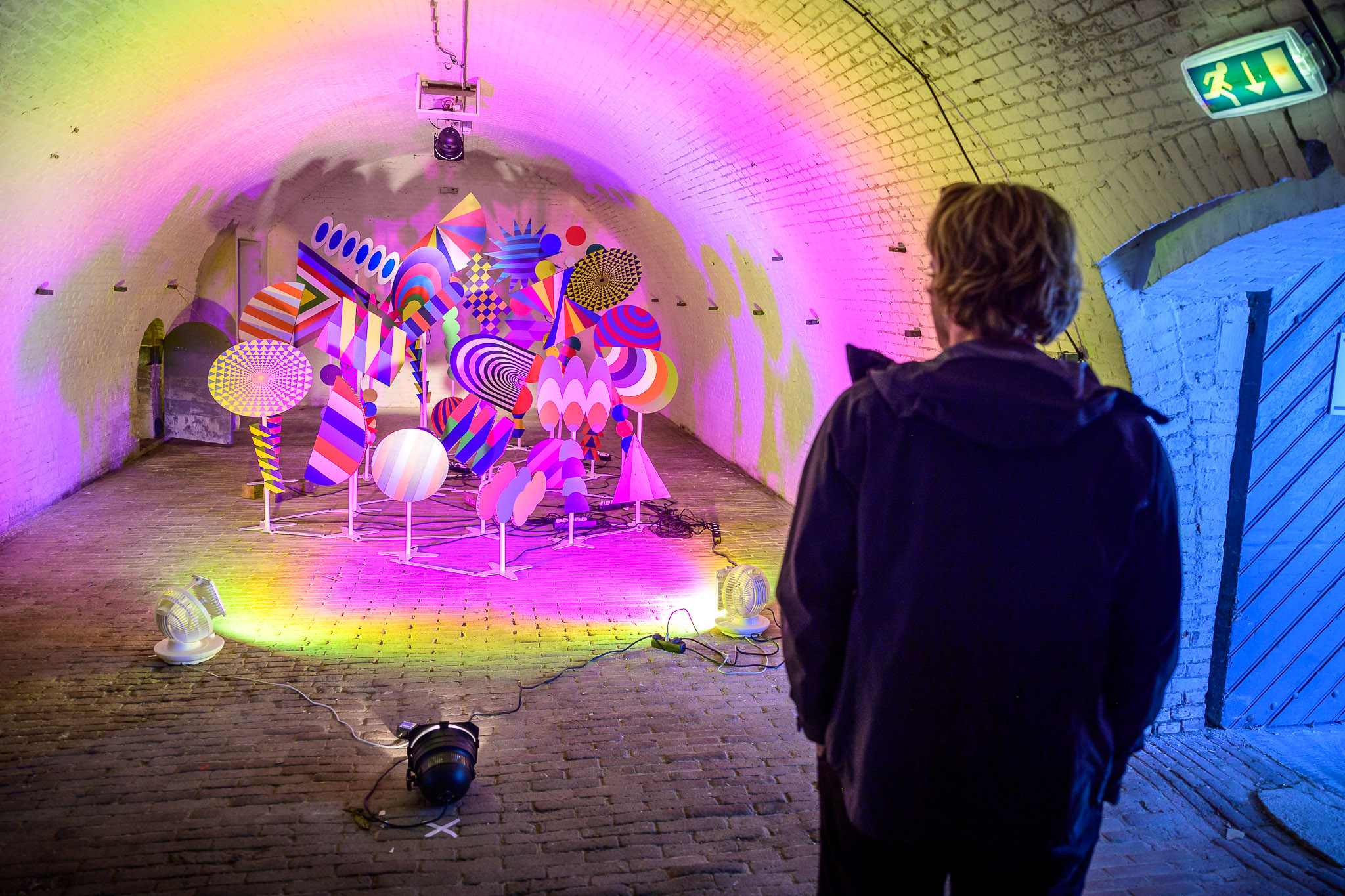
From June 16th to July 2nd, you can once again admire art installations by established artists and young talent at our festival hub at Fort Ruigenhoek. Below, we have listed the works you can come and see this year.
Artist VAKKI hails from one of the largest cities in the world: Seoul. Her work is a response to the busy life in a metropolis. The multitude of impressions and stimuli one receives throughout a day, from passersby to sounds and objects encountered, are depicted in VAKKI’s work as simple geometric shapes continuously moving past each other. VAKKI’s work is often described as ‘cheerful’ due to its vibrant colors. However, for Vakki, the bright colors do not necessarily express happiness but rather the intensity of her emotional life.
Vakki Park’s installation was featured during Tweetakt 2022 as part of the exhibition at Fort Ruigenhoek and was immediately the audience favorite. In 2023, the work will be showcased once again, but this time at our festival hub on Neude.
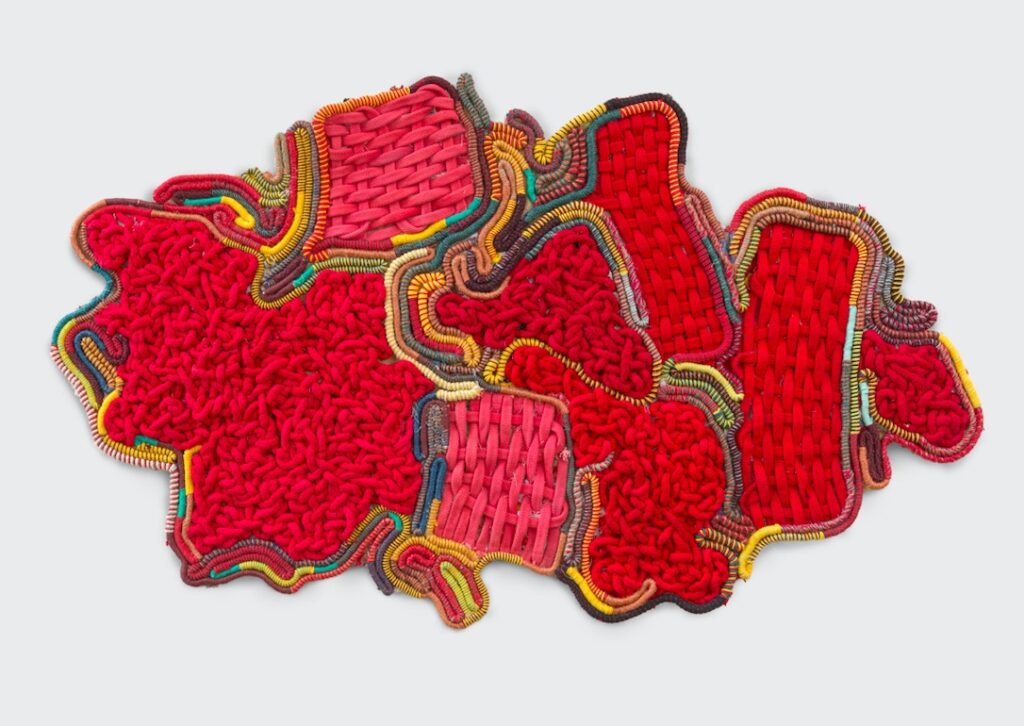
A map, a coral reef, a psychedelic spiderweb, or the intestines of a fantasy creature—everyone sees something different in the colorful thread artworks by Aafke Bennema. Aafke sees her work as an exploration of the unpredictability of nature.
The striking and colorful compositions of braided and melted ropes make the adventure of creation and discovery visible. In Aafke Bennema’s work, it’s not just about the end result, but also about the joy of the creative process itself. It will make you want to start creating yourself.
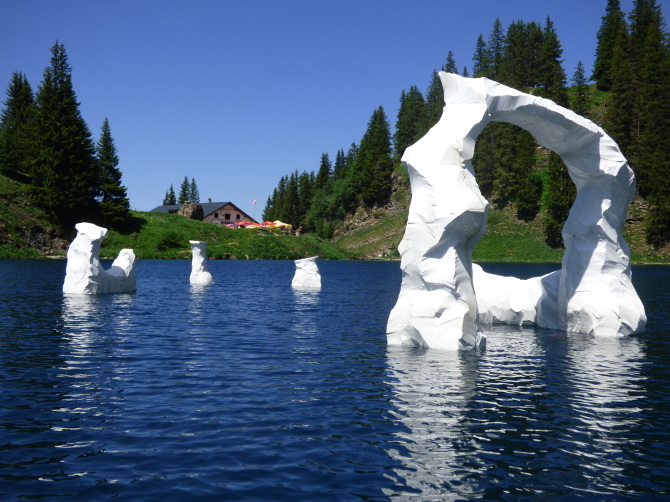
A few years ago, Festival Tweetakt took place in March and it snowed during the festival. Last year, we moved the festival to June, thinking that we would never encounter snow or ice again. But we were proven wrong. This year at Tweetakt, you will not only see a few small snowflakes but even gigantic icebergs!
With his interactive and moving sculptures, French artist Gaspard Combes aims to make spectators see the space around them in a different way. His artwork “Icebergs” consists of several ice floes floating in a lake or canal. Ice floes in a Dutch canal are not something you see every day. By confronting you with something unexpected, Gaspard hopes to make you look longer at your daily environment.
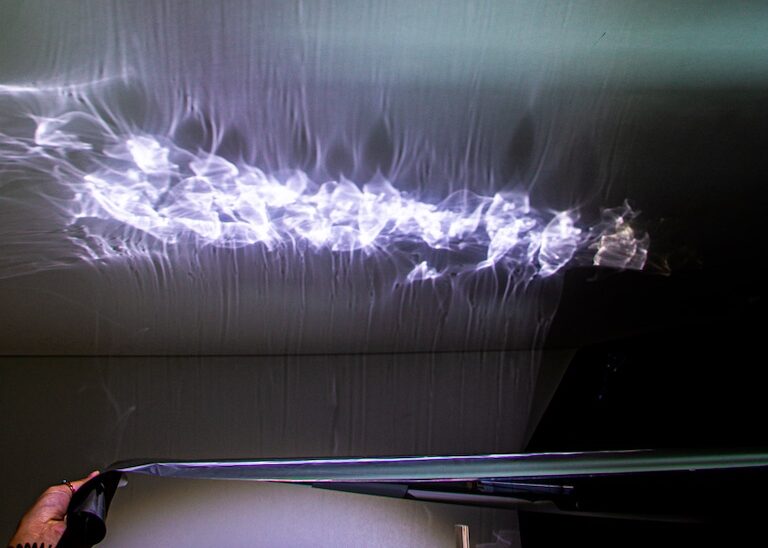
Lisa Brouns’ light projections are like moving versions of abstract paintings. The shifting white patterns appear mysterious, almost magical. It becomes even more astonishing when you realize how they are created. If you come closer, you’ll see that the videos are reflections of ordinary objects and materials.
Lisa Brouns marvels at the shapes and patterns of light, shadows, and reflections she encounters daily. With her work, she encourages the audience to look at their everyday environment with a fresh perspective.
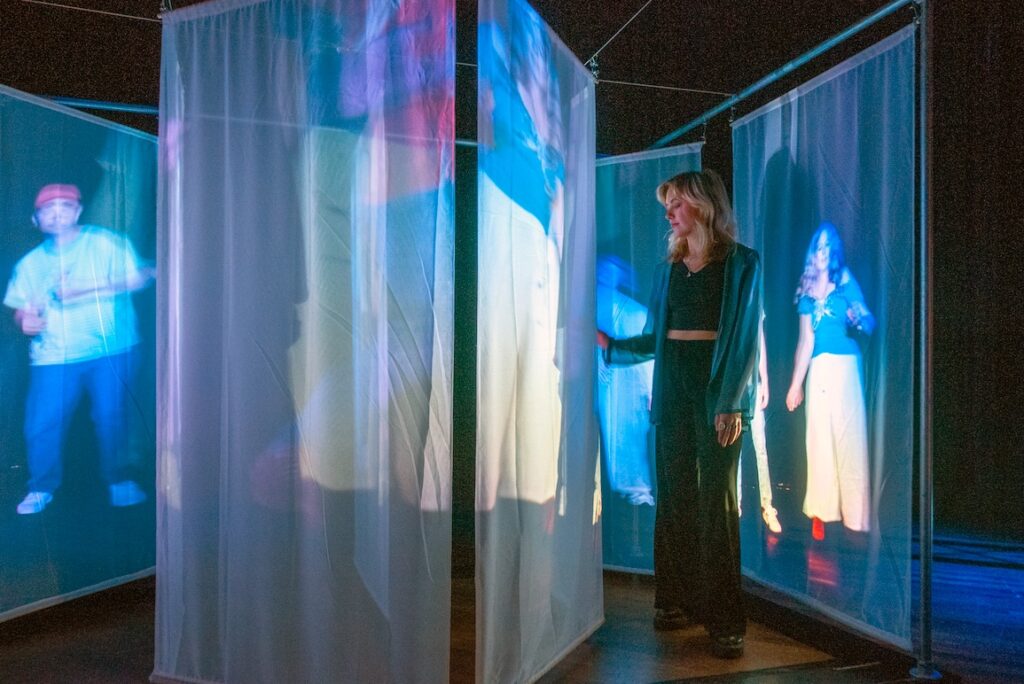
For TRANSCENDANCE, Demian Haverkamp filmed dancers as they danced continuously without taking breaks. As a visitor, you can move among large canvases with the projected dancers, becoming an intimate part of the dance.
Through her work, Demian Haverkamp showcases the value and necessity of dance, its spiritual and ritualistic nature, and the meaning it holds for the dancers themselves. She places the dance scene within an artistic and aesthetic context, emphasizing its necessity and artistic value, especially after a period in which dancing together was not possible.
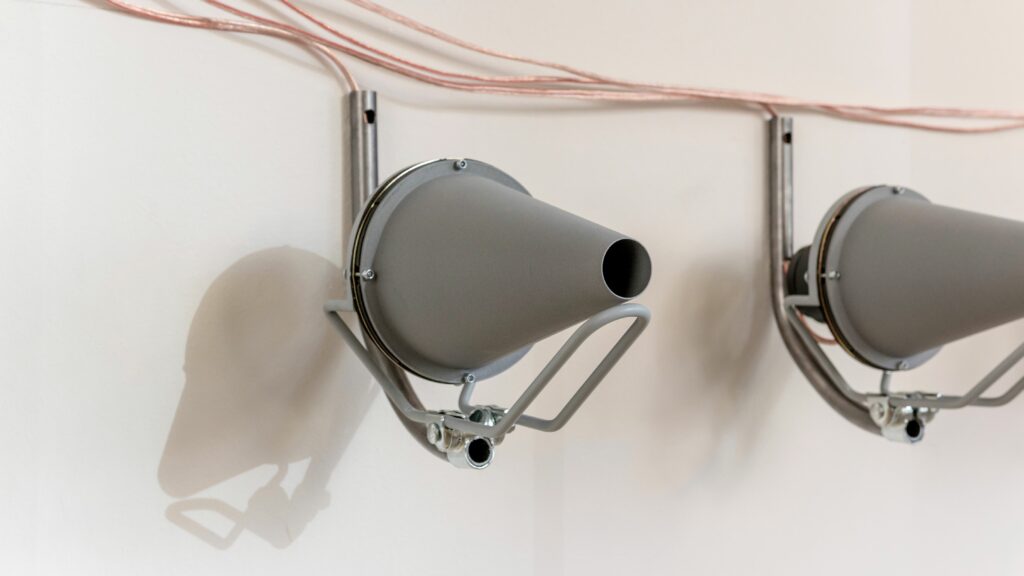
When you enter the space, the artwork Black Tempest immediately knows that you are there! The device senses your presence through air movements. As a result, you can’t just walk past this artwork. It wakes you up through what you feel.
Art is often something you can see, like a painting on a canvas, or something you can hear, like music. This artwork, however, works completely differently. The Black Tempest makes you feel. In doing so, Zhao Zhou’s work draws attention to our largest organ, which is often ignored: the skin.
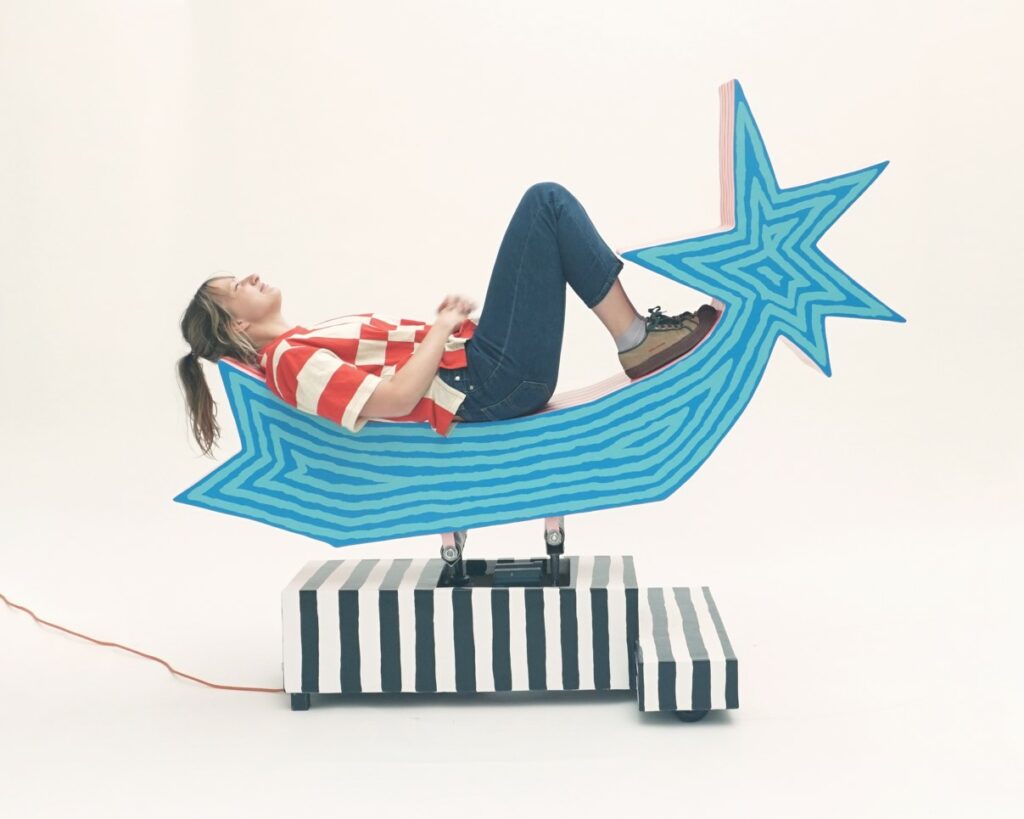
We Are Out Of Office wants people not only to look at their work but also to ‘discover’ it by climbing on it, sliding on it, or jumping over it. With their installations, they push the boundaries between ‘it’s meant to be looked at’ and ‘it’s meant to be used.’
For a while, We Are Out Of Office had the idea of creating a moving work. They had a base left over from a previous project, an old kiddy ride, and that’s how the work De Ster was born, which falls somewhere between an installation and a children’s play structure.
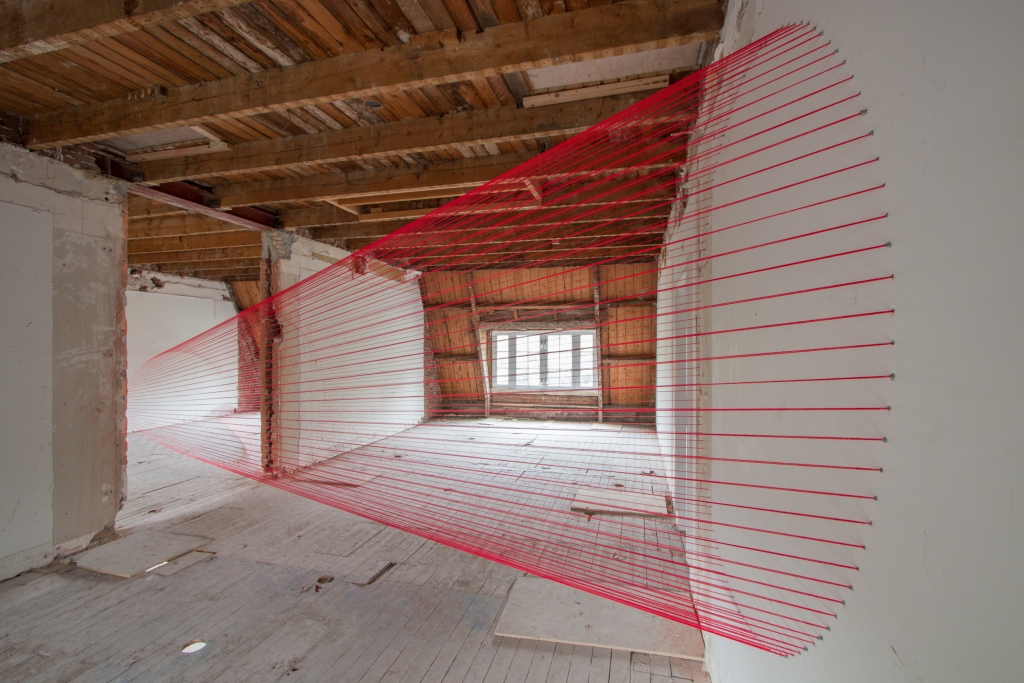
Robbert de Goede creates drawings in the air! How is that possible? Not with paint and brushes on a canvas or with pencils and markers on paper. Instead, he uses wire. The wire transforms the entire space into an artwork. Even you become part of the artwork. Walk around the artwork and you’ll see something different from every perspective.
Robbert de Goede finds inspiration in micro(cosmology), mathematical issues, and interactions that take place in 3D environments, free from our limited perspective on gravity and everyday physics. Robbert creates ‘drawings in the air’ using only one medium: threads. The spaces between the threads are just as important as the shapes they create together and the shadows they cast.
What is the meaning of objects in public space, and how do they influence the users of that space? The works of multidisciplinary artist Sil Krol play with the visual language and meanings of public spaces. Through site-specific installations and monumental sculptures, he intervenes in public space in a temporary and spontaneous manner. This encourages the public to explore these places in unusual ways.
For Tweetakt 2023, Sil Krol is creating a new work. He will be working with mirrors and expects to achieve something very special by placing them in one of the bunkers at specific locations. Something that will make you view yourself in a whole new way…
Lee McDonald creates art from almost anything he can get his hands on. His creative process can best be described as intuitive, impulsive, pathetic, impractical, and absurd. For Tweetakt, he is making a jetski from found materials, including old cardboard. The work is part of his ongoing project TEST. The tests are scenarios of movements and reactions that occur when the artist activates different materials and objects.
From June 16th to July 2nd, you can see these artworks at Fort Ruigenhoek (open on Saturdays from 10:00 am to 11:00 pm and Sundays from 10:00 am to 6:00 pm), in bunkers or under the trees. In addition to art installations, you will also find performances, short films, workshops, and a large terrace at Fort Ruigenhoek.
If you have a ticket for a performance at Fort Ruigenhoek, the entrance to the fort is included. Otherwise, you will need to pay €5 at the fort’s ticket office (or €1 if you are eligible for a discount).